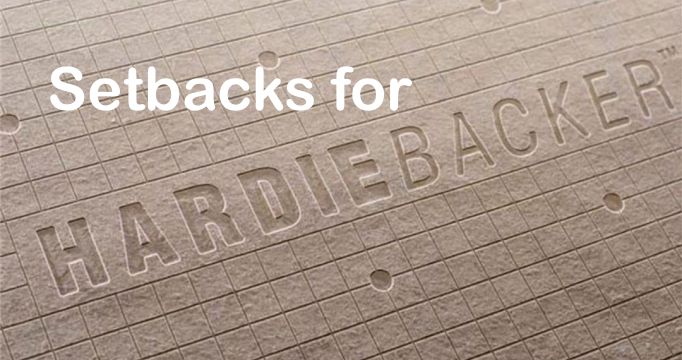Usually, Durock vs. HardieBacker is a result of contractor preference. If a contractor likes a certain kind of product, they are more likely to use it more often, and that results in product bias.
Sometimes, a bad installation process will also change the view of a contractor who may change his mind about a product after seeing shoddy work.
HardieBacker and Durock are different products, but they are essentially and often used for the same type of work. The differences between the two products are vast.
HardieBacker vs. Durock
There are a few key things that make HardieBacker board different from Durock. It should be noted that HardieBacker is approved only for internal use and should never be used outside. Durock can be used for both internal and external situations.
Durock is a reliable cement product that contains glass mesh. It is the heavier of the two materials, which means it is more difficult to use and maneuver. It will be more difficult to cut Durock board and installation will be messier. There will have to be a particulate cleanup during cutting and smoothing.
HardieBacker is much more light, and it is also the best selling brand of cement board available. It is much cleaner because it does not have any glass in it. It allows for a smooth job with minimal mess. As a bonus, HardieBacker board has an EZ Grid pattern so you can cut perfect lines.
The makeup of HardieBacker also has the advantages of flexibility and strength. It is lighter and more flexible than its competitor, which makes for easier and efficient installation without sacrificing integrity. It also allows for easier cleanup.
HardieBacker is also the go-to choice when it comes to countertops and tile. Durock is too abrasive and can damage vinyl, porcelain, and enamel.
HardieBacker does not contain any course materials, so it is the preferable choice. It has a warranty that extends over the use of vinyl tile applications. Durock does not.
Setbacks for HardieBacker

One issue that becomes a problem for HardieBacker is areas that become exposed to moisture. The cement and fiber mixture makes it difficult to remain as “waterproof” as the packaging suggests.
However, it is mold resistant, so it can be used to underlay showers and tubs. It might be a good idea to apply a waterproof sealant over the HardieBacker during installation to ensure sanitation.
Cement Board and Wonderboard
Now that we have learned quite a bit about both HardieBacker and Durock, we can now talk about HardieBacker vs. Cement Board or, more specifically, HardieBacker vs. Wonderboard vs. Durock. Let’s find out about Cement Board, and some of it’s used.
Cement board is a mineral based product made of inorganic materials including cement, water, silica, limestone flour, and Kevlar or fiberglass.
Unlike wood base materials such as plywood that contain wood such as drywall, Cement board does not have the organic material that would promote rot or decomposition.
Cement board is porous, so grout and mortar adhere to it well. It can be nailed or screwed into almost any material, including cinderblock, brick, and concrete. Cement board is easily cut with a hand saw or a power saw.
Wonderboard is a type of cement board used for tiling in wet places, especially bathrooms. Wonderboard is used specifically for shower and tub tiles, but they are also used on decks, floors, and pools.
Wonderboard works well for these locations because it is the only backer that will not fail when the water inevitably penetrates the tile. Cement board is best for any job that is always going to be submerged in water, and Wonderboard is arguably the best choice for the job.
Now that you know the different type of backers, you can decide as to which will be best for your job. Whether it be the ever popular HardieBacker, the always useful Durock, or anything in between we are sure that once you choose you will be well on the path to getting your project underway as soon as possible!
- Is a Hot Water Heater In the Attic a Good or Bad Idea? - July 18, 2021
- Lawn Mower Starts Then Dies – Here’s the Fix! - June 21, 2021
- Can You Mix Pine-Sol and Bleach? - September 9, 2020
